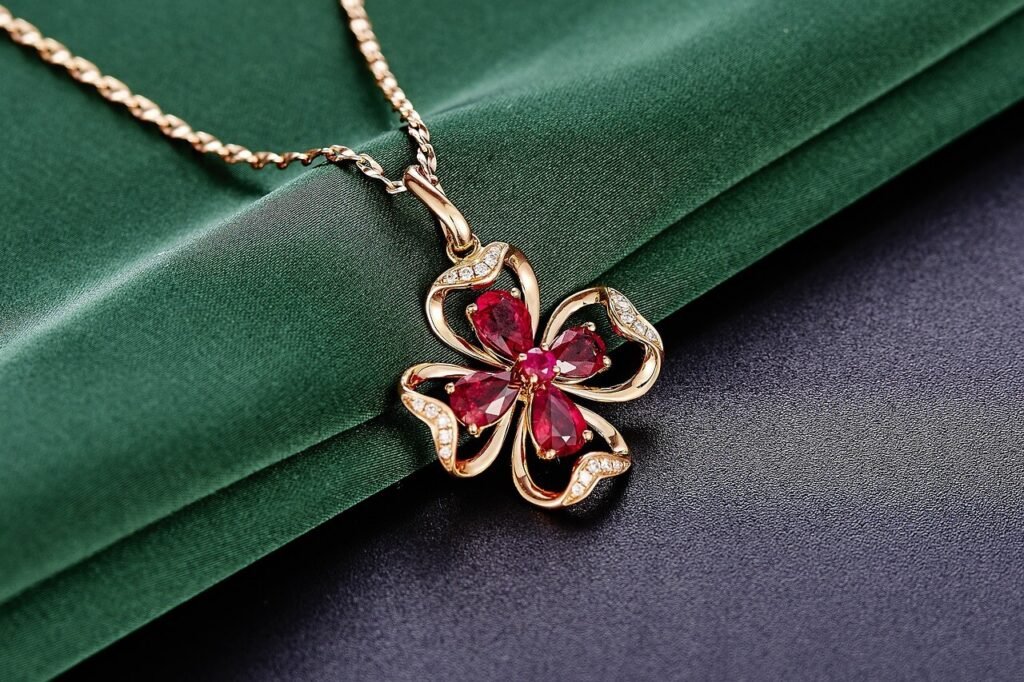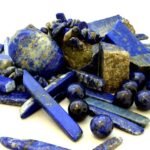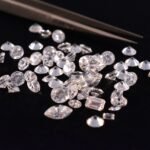Introduction: The Fiery Essence of the Ruby Gemstone
The Ruby Gemstone is celebrated as the King of Gemstones, a radiant symbol of love, power, and passion. Its mesmerizing crimson hue has captivated royalty, mystics, and collectors for centuries. Known as Manik Stone in Vedic astrology, the Ruby represents the Sun (Surya) the celestial source of life, warmth, and vitality. Beyond its beauty, the Red Ruby stone holds profound healing energies that promote courage, motivation, and emotional balance. This fiery gemstone not only enhances personal magnetism but also strengthens self worth and confidence, making it a timeless choice for both jewelry lovers and spiritual healers alike.
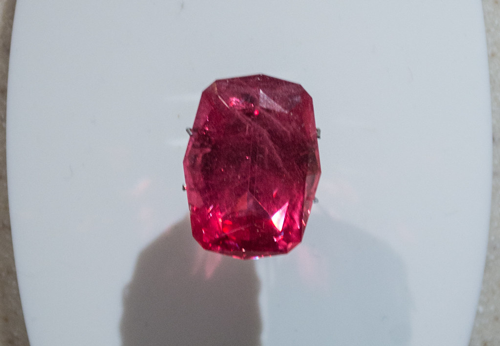
Ruby Gemstone Meaning & Symbolism
The meaning of the Ruby gemstone extends far beyond its deep red brilliance it embodies eternal love, divine passion, and spiritual enlightenment. In ancient civilizations, Rubies were believed to contain the “flame of life,” protecting warriors in battle and ensuring victory and vitality. Symbolically, the Ruby resonates with courage, success, and leadership, empowering wearers to face challenges with strength and determination. In modern metaphysical traditions, it’s viewed as a crystal of the Heart Chakra, inspiring compassion and emotional depth. The Ruby’s timeless symbolism of love and honor makes it one of the most desired precious gemstones for both romance and empowerment.
Healing Properties of the Ruby Gemstone
The healing properties of Ruby make it one of the most powerful stones in crystal therapy. It revitalizes physical energy, strengthens the heart, and promotes better circulation. Emotionally, Ruby removes feelings of doubt, fear, and exhaustion, replacing them with enthusiasm, self assurance, and joy. Spiritually, it helps awaken one’s inner fire, aligning you with your life purpose and passion. Many energy healers recommend natural Ruby gemstones for those struggling with emotional fatigue, insecurity, or lack of direction. Its strong connection to the Sun’s energy brings warmth and vitality, helping you stay motivated and focused in all areas of life.
Different Types of Ruby Gemstones
Ruby Gemstones exist in various types, each radiating unique beauty, energy, and symbolic meaning. From the legendary Burmese Ruby to the mystical Star Ruby, every variety tells a different story of nature’s brilliance and spiritual strength.
Burmese Ruby (Myanmar Ruby)
The Burmese Ruby, famed for its deep pigeon-blood red hue, is considered the most valuable and desirable type of Ruby in the world. Originating from Myanmar, it symbolizes power, passion, and prosperity, making it a favorite for collectors and jewelry lovers alike. Its intense red color and vivid fluorescence reflect strong Mars energy, enhancing vitality and confidence. Spiritually, Burmese Ruby energizes the Root and Heart Chakras, promoting emotional courage and grounding.
African Ruby
The African Ruby, mainly sourced from Mozambique and Tanzania, displays a rich red tone with subtle violet or purplish undertones. This variety is admired for its durability and brilliance, often used in fine jewelry. Known for its grounding and balancing energy, it strengthens determination, focus, and emotional stability. In crystal healing, African Ruby helps dispel fear and brings clarity to decision-making, making it a powerful stone for those seeking stability and strength in their lives.
Thai Ruby (Siam Ruby)
Thai Rubies, also known as Siam Rubies, are darker and more mysterious in color, often featuring deep red to burgundy hues. Ruby gemstones embody inner power, protection, and persistence, inspiring wearers to cultivate emotional endurance and strength in daily life. In metaphysical traditions, Thai Rubies stimulate the Root Chakra, aligning the wearer’s energy with passion and courage. Their affordability and availability make them a popular choice for modern jewelry lovers seeking authenticity and elegance.
Star Ruby
The mesmerizing Star Ruby displays a natural six-rayed star (asterism) that glows across its surface when viewed under direct light. Needle-like rutile inclusions create this optical phenomenon, giving the Star Ruby its celestial beauty. Beyond its radiant appearance, the gem awakens spiritual insight and shields the wearer from negative energies. It balances emotional turbulence, amplifies intuition, and helps in meditation by connecting to higher consciousness. Many healers regard it as a stone of divine guidance and spiritual awakening.
Chakra Connection of the Ruby Stone
The Ruby gemstone powerfully activates both the Root Chakra (Muladhara) and the Heart Chakra (Anahata). Through the Root Chakra, it grounds your energy and strengthens your sense of stability, courage, and security. Through the Heart Chakra, it opens you to love, compassion, and emotional healing. This dual activation helps harmonize physical vitality with emotional wisdom. Healers often use Ruby crystals in meditation to release emotional blockages, ignite self-love, and boost positive energy. The Ruby’s fiery vibration reawakens enthusiasm for life, making it one of the most spiritually rejuvenating gemstones available.
Zodiac Connection of Ruby Gemstone
The Ruby gemstone aligns powerfully with Leo (Simha Rashi) but also benefits Aries, Sagittarius, and Scorpio by enhancing leadership and confidence. It helps these signs embrace their individuality, courage, and drive. For Leos, Ruby amplifies natural charisma and authority, helping them shine in public life. Sagittarians experience enhanced focus and truth seeking, while Aries gains motivation and balance in action. For Scorpio, it aids emotional expression and transformation. However, those ruled by Saturn (Capricorn, Aquarius) should consult astrologers before wearing Ruby, as its fiery energy may conflict with their planetary alignment.
Astrological Significance of Ruby Gemstone (Manik Stone)
In Vedic astrology, the Ruby gemstone represents Surya (the Sun), symbolizing power, authority, and leadership. Wearing a Ruby strengthens one’s confidence, ambition, and vitality. It’s particularly beneficial for Leos (Simha Rashi), as it harmonizes their ruling planet, enhancing charisma and self expression. Astrologers recommend wearing Manik Stone to counteract weak Sun placement in a birth chart, which can cause low energy, lack of recognition, or fear of judgment. The Ruby infuses life force energy, improving decision making and emotional resilience. Its connection to the Solar Plexus Chakra also helps balance willpower, courage, and creativity.
Ruby as a July Birthstone – The Gem of Passion and Strength
The July birth stone is the ruby, symbolizing strength, courage, and love. Many believe that wearing a ruby gemstone brings protection and success. In South Asian cultures, the ruby stone in Urdu is called yaqoot stone, and it holds great spiritual significance.
How Do Rubies Compare to Other Gems Like Diamonds and Pink Sapphires?
When it comes to durability, rubies are second only to diamonds, making them one of the most robust options for everyday wear in jewelry. However, rubies differ from diamonds in terms of brilliance, with diamonds exhibiting more fire (sparkle), while rubies captivate with their rich color.
Ruby and pink sapphire distinctions can sometimes blur, as both are from the corundum family. The key difference lies in the saturation of the color. Stones with less intense red hues may be classified as pink sapphires, though the line between a ruby and pink sapphire is a matter of grading.
Physical and Emotional Benefits of Wearing Ruby
Wearing Ruby jewelry promotes overall well-being, enhancing blood circulation, detoxification, and vitality. It’s believed to strengthen the heart and protect against diseases linked to poor energy flow or stress. Emotionally, the Red Ruby stone boosts self confidence, encourages leadership, and eliminates negativity. It’s especially beneficial for people in competitive careers or leadership roles, where confidence and clarity are key. Ruby’s warm vibrations also attract love, passion, and harmony in relationships. Its natural ability to balance both physical and emotional energies makes it a must-have stone for anyone seeking personal growth and inner strength.
Natural vs Synthetic Rubies: What’s the Difference?
Natural rubies are mined from the Earth, while synthetic rubies are created in laboratories. Though synthetic rubies stones share the same chemical and physical properties as natural ones, their origins impact their value significantly. Natural rubies command higher prices due to their rarity, particularly stones from historic mines like the Mogok Valley.
It’s essential to know how to differentiate between the two. Natural rubies stones often contain imperfections, such as rutile inclusions, which are absent in lab grown stones. These inclusions are a clear indication that the ruby is natural.
Care and Cleansing of Ruby Gemstone
Proper care keeps your Ruby gemstone vibrant for generations. Clean it regularly using warm water, mild soap, and a soft cloth. Avoid harsh chemicals, ultrasonic cleaners, or direct sunlight exposure for extended periods, as they may affect color. To energetically recharge your Ruby, place it under sunlight for a few hours or cleanse it with sage smoke or moonlight. Storing Ruby separately from softer stones like Opal or Pearl prevents scratches. Regular cleansing also restores its spiritual frequency, keeping its protective and energizing vibrations strong for continued benefits.
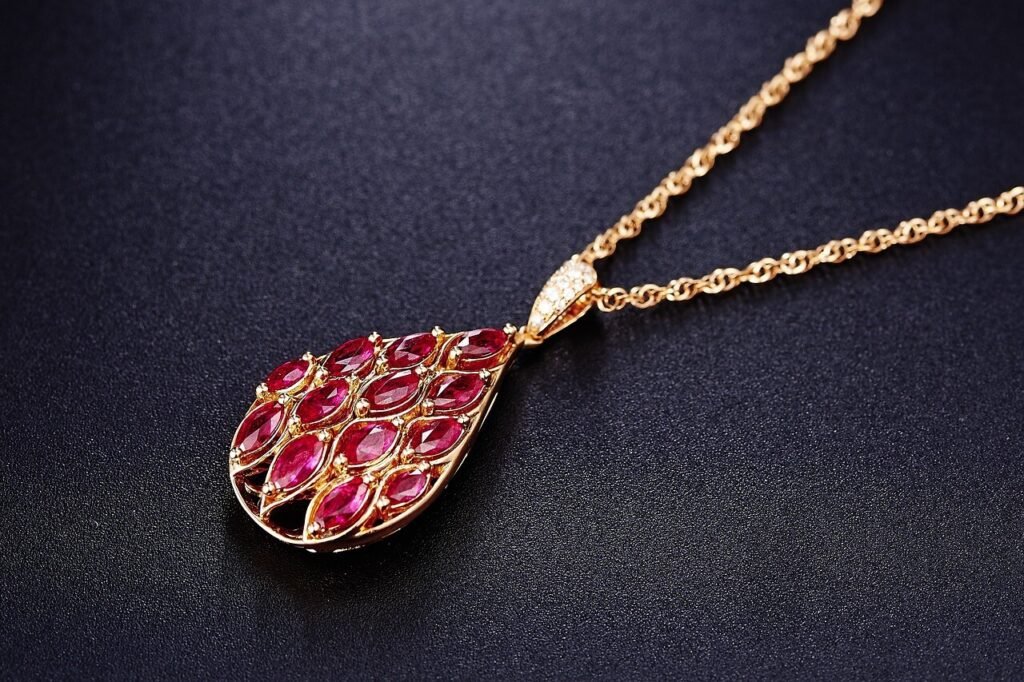
Who Should Wear Ruby Gemstone?
The Ruby stone is ideal for leaders, entrepreneurs, artists, and anyone seeking personal transformation. People struggling with indecision, lack of motivation, or low vitality can benefit from its empowering energy. Ruby resonates deeply with individuals aiming to reignite passion whether in relationships, careers, or spiritual journeys. However, one should always consult an experienced astrologer before wearing it for astrological purposes.
How to Identify an Original Ruby Gemstone
To ensure authenticity, always buy certified natural Ruby gemstones from trusted dealers. Genuine Rubies display rich, even color and slight natural inclusions, proving they’re not synthetic. A real Ruby feels cool to the touch, doesn’t scratch easily, and shows natural fluorescence under UV light. Avoid stones that appear too perfect or too bright, as they’re likely glass filled or lab grown. Reliable sellers provide GIA or IGI certification, verifying origin, treatment, and quality. Always examine the cut, clarity, and carat weight, as these factors significantly influence the Ruby’s brilliance and market value.
FAQs About rubies stone
Ruby is the stone of passion, power, and protection. It enhances confidence, courage, and vitality while stimulating the Root and Heart Chakras for strength and love.
Ruby suits Leo, Aries, Sagittarius, and Scorpio. It boosts leadership, success, and positivity for Sun-ruled signs.
Ruby brings energy, motivation, love, and prosperity. It strengthens relationships and helps overcome fear and doubt.
A genuine Ruby shows vivid red color, natural inclusions, and hardness. Always buy certified natural Ruby stones from trusted sellers.
Ruby represents the Sun (Surya) the planet of confidence, strength, and vitality.
Ruby activates the Root Chakra for grounding and stability and opens the Heart Chakra for love and balance.
Yes, Ruby pairs well with Pearl or Yellow Sapphire. Avoid Blue Sapphire or Emerald unless advised by an astrologer.
Wear Ruby in gold or copper on the ring finger (right hand) on a Sunday morning, after cleansing with Om Suryaya Namah.
Popular types include Burmese Ruby, African Ruby, Thai Ruby, and Star Ruby, each with distinct color and energy.
Yes, Ruby promotes energy, focus, and emotional balance, making it ideal for meditation and chakra healing.
Conclusion
The Ruby gemstone embodies the essence of fire, vitality, and divine passion. Its mesmerizing color and radiant energy make it one of the world’s most cherished precious gemstones. Whether worn for astrological benefits, chakra healing, or jewelry elegance, Ruby enhances every aspect of life with courage, love, and light. As a timeless July birthstone, it represents power and confidence, reminding us that true brilliance comes from within. Investing in a natural Ruby gemstone is not just a choice of beauty it’s a step toward self-empowerment and spiritual awakening.
